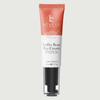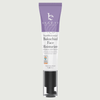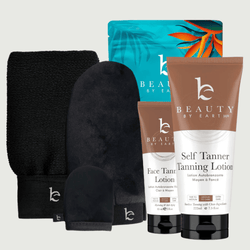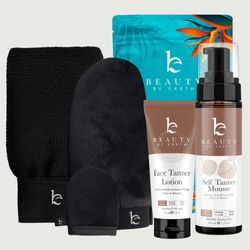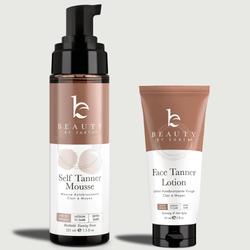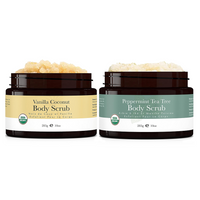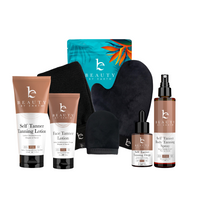Human trafficking has been around for centuries but recently it's started trending as one of the biggest topics in pop culture. Every year, hundreds of thousands of men, women, and children are denied basic rights by human traffickers. This form of modern-day slavery permeates nearly every country in the world, generating billions in annual revenue. But why is human trafficking still happening? And what can we do to stop it? Jump in with us as we explore the ins-and-outs of this dark, pervasive industry.

What is Human Trafficking?
Human trafficking involves the use of force, fraud, or coercion to get profit and work from an individual. Yes, it truly is as bad as it sounds. We're talking forced marriages, organ removal, slave labor, and prostitution for starters . . . And with the widespread adoption of the internet, human trafficking is at an all-time high. Currently, it ranks as the 3rd most profitable crime after drug dealing and weapons smuggling. Why is human trafficking such a big issue?
Human Trafficking as an Industry
Human trafficking persists today simply because of demand. Our global economy has a seemingly endless appetite for cheap (*free) labor and sexual gratification for all sorts of proclivities. In recent years, human trafficking has become a $150 billion-dollar industry with a large portion of that being made from sexual exploits. A breakdown of the profit sections of trafficking look like this:
- $99 billion from commercial sexual exploitation,
- $34 billion in construction, manufacturing, mining, and utilities
- $9 billion in agriculture, including forestry and fishing
- $8 billion dollars is saved annually by private households that employ domestic workers under conditions of forced labor (Source humanrightsfirst.org).
Traffickers operate just as efficiently as any fortune 500 company. They have policies and procedures, and workers at every level. Traffickers make major profits off of victims, with reports showing that a sex trafficked victim's profits average nearly $100,000 and general trafficked victims make nearly $21,800.
The profits gained from trafficking go straight into the traffickers' pockets, and victims see little to no profit from their labor. As long as there's a profit to be made trafficking will continue, and all traffickers need is an opportunity.
Who is Trafficking?
This modern-day slavery happens in our own backyards, though must of us live oblivious to its presence. Traffickers play into an individual's vulnerability (homelessness, runaways, immigrants) to lure them in. They can take the shape of the most trusted people in our lives: brothers, mothers, politicians, store clerks, and even preachers.
They are also complete strangers who disguise themselves as philanthropists. No matter the age, gender, or wealth status there is always a possibility that an individual can be trafficked. Of those trafficked, women and children account for the majority.
Who is Being Trafficked?
Around 51% of trafficked humans are children and reports show a large number of those children were at one time part of the foster care system. This shows us that human traffickers lack empathy and have a distorted view of the value of life. But how do these traffickers lure in individuals when we are hyper-aware that trafficking is a possibility?
Traffickers and Social Media
With the rise of social media, the standard of how traffickers coerce has changed. While the “traditional” methods such as abduction are still used to acquire victims, social media has given them access to a wider range of victims in a shorter amount of time.

Before technology, traffickers could only target a few individuals at a time. Social media has sadly revolutionized the industry. Now, traffickers have ready-access to thousands of vicitms at any given time.
To safeguard their investments, traffickers will even pose as their victims on their social media accounts. They'll post regular updates so that friends and family aren’t alarmed by a sudden silence. This allows traffickers to keep any suspicion around where the victim may be located under wraps. Once a trafficker has access to victims accounts, they can also target the victims' families and friends.
Traffickers keep their victims tied to the fear of retribution inflicted on family members, many victims don't try to escape. This issue isn’t limited to one area, human trafficking is an issue that even the most evolved countries face.
Efforts to Stop Human Trafficking.
The United Nations Protocol to Prevent, Suppress, and Punish Trafficking in Persons, which established a victim-centered approach to trafficking, has since been signed by 177 countries.
In 2005, the Council of Europe Convention on Action against Trafficking in Human Beings marked a step towards enacting more change in Europe. The U.S. has gained a wealth of insight into human trafficking in recent years, but there’s still more work that needs to be done.
Secretary of State Micheal Pompeo summed up the issue with human trafficking by stating, “Every person, everywhere, is inherently vested with profound, inherent, equal dignity. America was founded on a promise to defend those rights— including life, liberty, and the pursuit of justice. But too often we’ve fallen short, and we cannot fall short on this challenge.”
What is the U.S. Doing?
The spark that ignited the U.S.’s to end human trafficking started with the Trafficking Victims Protection Act. The TVP Act was the first federal law to address sex and laboring trafficking. TVPA focuses on prevention and protection for trafficking victims as well as prosecution for traffickers.
TVPA ushered in the "Trafficking in Person Report" which details information on human trafficking, human trafficking victims, and the efforts to end the issue as of that year. Aside from reports, there are dozens of anti-human trafficking organizations like The National Human Trafficking Hotline which connects victims and survivors with support and safety.
Who is O.U.R.?
One leader in fighting back against human trafficking is O.U.R. or Operation Underground Railroad. In the past 6 years alone O.U.R. has 4,100 victims and assisted in the arrests of more than 2,300 traffickers around the world. With their empowerment of partners, they have also aided in rescuing 10,000 victims of sex trafficking.

What Does O.U.R. Do to Combat Child-Trafficking?
The O.U.R.s' team consists of former CIA agents, past and current law enforcement, and several individuals who are passionate about the work they do to end sex trafficking.
These operations are always in conjunction with law enforcement throughout the world. O.U.R. has made it its mission to provide safety and resources to victims of sex trafficking. O.U.R. has a 6 step process on how they rescue victims and arrest traffickers.
The Process
- Assess the feasibility of a rescue.
- Research the location.
- Design a strategy.
- Take action.
- Recover the child.
- Arrest, try, and convict the perpetrators.
This rescuing process has to be carefully planned out and takes in-depth coordination with other organizations. This is because O.U.R. is not a government agency, but a non-profit. They rely on donations and don’t generate income from the rescues. Even after they've successfully rescued a child, however, the work isn't over.
Trauma—both physical and emotional in nature—takes years to heal from. It's a long, grueling recovery process for survivors, but O.U.R. helps here also.
Operation Underground Railroad provides aftercare to help victims heal and adjust to life post-slavery. O.U.R. partners with different organizations, safe homes, and aftercare centers around the world. As well as providing access to proper medical care and social workers, O.U.R. feels that supporting in-country aftercare is the best way to empower victims.
They sum up their aftercare by saying, “It’s the desire of O.U.R. Aftercare that we come in with a servant's heart and empowering spirit”. Through this collaboration, they have been able to provide more support than they thought possible.
Fostering these partnerships with other organizations around the world allows them to provide holistic care. Partnerships are important to O.U.R.. Without them, O.U.R. wouldn't be able to provide the critical care that they do in a variety of countries.
What is Beauty by Earth Doing?

At Beauty by Earth, we feel strongly about ending sex trafficking and align with the views of O.U.R. BBE feels that in order to end this epidemic it requires work from all fronts. In order to end human trafficking, the issue deserves more than just talk. It requires tangible and definitive action.

Our team has given support to O.U.R through a donation of $10k. Also, we've participated in the July 30th World Day Against Human Trafficking. We continue to do the work necessary to support and assist victims of sex trafficking.
What Can You Do to Stop Human Trafficking?
Human trafficking is such a monolithic industry and it's normal to feel overwhelmed or powerless. There are many ways you can do your part to help end trafficking.
The month of January is National Slavery and Sex Trafficking Prevention Month, but this is an issue you can help with year-round. Advocate for victims by sending letters to officials asking for stronger legislation to about anti-human trafficking laws. @UNICEFUSA on social media with the #EndTrafficking to spread the word to others in your community.

Hold fundraisers or donate a portion of your own money to organizations like O.U.R., UNICEF, Polaris, or dozens more. Another way you can help is by volunteering with like-minded organizations. You can help by financially supporting End Slavery Now or joining the Human Trafficking Hotline team.
And remember, If you think someone may be a victim or perpetrator of human trafficking, speak up! Report suspicious behavior to officials.
Human Trafficking has been an issue for far too long. We now have a better understanding of how trafficking can happen, and that anyone can be a victim or a trafficker. It is our duty to ensure that human trafficking ends with us.
You can follow Operation Underground Railroad on Instagram or learn more on their website.
Resources for Learning More about Human Trafficking:
https://www.endslaverynow.org/blog/articles/justifying-human-trafficking-the-mind-of-a-trafficker
https://www.dosomething.org/us/facts/11-facts-about-human-trafficking
https://www.themuse.com/advice/whats-being-done-to-stop-human-trafficking
https://www.unicefusa.org/mission/protect/trafficking/end
https://www.humanrightsfirst.org/resource/human-trafficking-numbers







